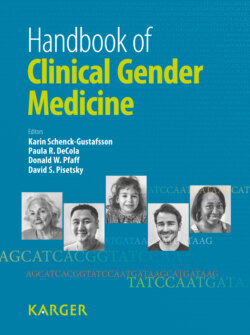Читать книгу Handbook of Clinical Gender Medicine - Группа авторов - Страница 88
На сайте Литреса книга снята с продажи.
Abstract
ОглавлениеThe biopsychosocial signatures for stress-related conditions are age, sex, and gender specific. The trajectories of these diseases are furthermore dynamic as they manifest themselves differently throughout lifespan development and in the context of broader social, cultural, and historical factors. Delineating the effects of chronic stress on the brain and body therefore requires approaches that capture the complexities of the predetermined sex of the individual and the acquired gender throughout the life cycle.Targeting these complex risk factors and promoting protective factors can advance person-centered approaches in medicine. With the goal of refining the diagnosis, treatment, and prevention of diverse diseases, this chapter presents recent progress recorded in the literature on stress-related diseases, highlighting the allostatic load model that represents the biological damage individuals incur when chronically stressed.
Copyright © 2012 S. Karger AG, Basel
Stress is broadly defined as a real or interpreted threat to an individual’s physiological and psychological integrity that results in biological and behavioral responses [1]. While acute stress is healthy, chronic stress is a major risk factor for many conditions discussed in this textbook. By focusing on nuances stemming from age, sex, and gender, this chapter will introduce the reader to advances in measuring chronic stress using the allostatic load (AL) model [2].
